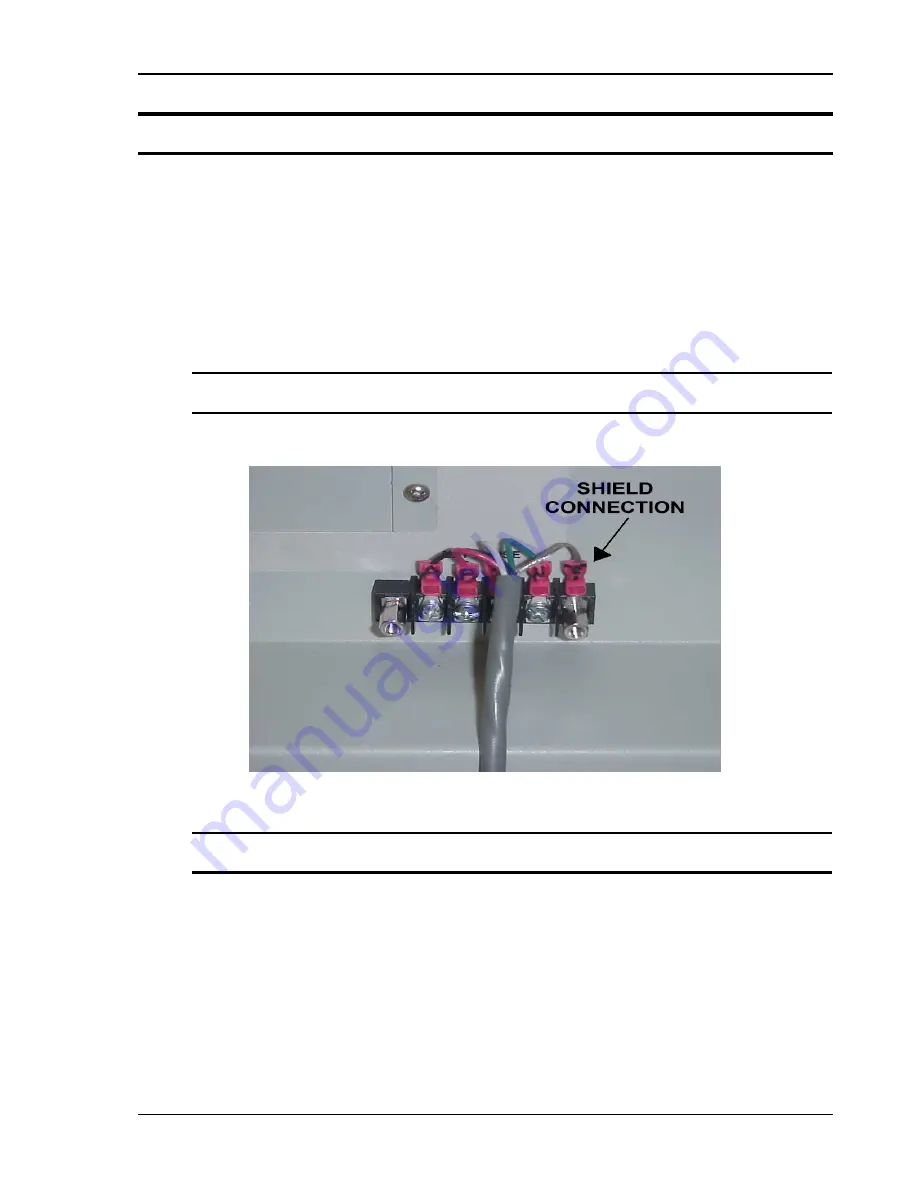
AMETEK Programmable Power
BPS Series User Manual M440077-01 Rev A
42
4.6
Output Connections
4.6.1
Output Wiring
The output terminal blocks, TB1A and TB1B are located at the lower rear of the unit behind the bottom
access panel. See Figure 4-2 for details.
Three phase output line connections are made to terminal block TB1A. The phase outputs are labeled A,
B and C. The neutral connection (if needed) can be made on terminal block TB1B. The neutral
connection is always required to connect Y loads or for connecting a single phase load to Phase A only.
The external sense inputs allow the power system output voltages to be monitored directly at the load and
must be connected at TB2 when the sense is programmed for external. The external sense input does not
have to be connected when Internal Sense is programmed. The external sense wires are to be connected
to TB2 on the rear panel and should be run using a twisted shielded cable. See Figure 4-4 for location of
TB2 and Figure 4-5 for shield connection detail.
Note:
For External Sense connection, a shielded cable MUST be used with the shield connected to
chassis ground at the Ext. Sense connector. (See Figure 4-5).
External sense is recommended for multi-cabinet systems is the output wiring from the cabinets to the
common output terminal block supplied is not of equal length.
Figure 4-5: External sense cable shield connection to chassis ground
Note:
The output of the power source is isolated from the input line and floating with respect to
chassis ground. If needed, either side (HI or LO) may be grounded.
If the EUT changes frequently, you may want to consider using some quick disconnect scheme external
to the BPS so it will not be necessary to power down the BPS and remove the rear covers. This can take
the form of a panel-mounted socket (1 or 3 phase) of sufficient current and voltage rating. (Not supplied
with BPS)
The output power cables must be large enough to prevent a total voltage drop exceeding 1% of the rated
output voltage between the power source and the load. Table 4-2 shows the size of the cables that may
be used. Note that wires must be sized to accommodate the maximum current that is available. This may
be a function of the voltage range and phase mode on some BPS models. If the BPS has more than one
output voltage range, size the wires for the lowest available voltage range as the currents will be highest
in that range.






























